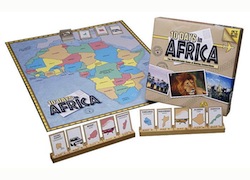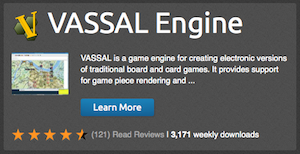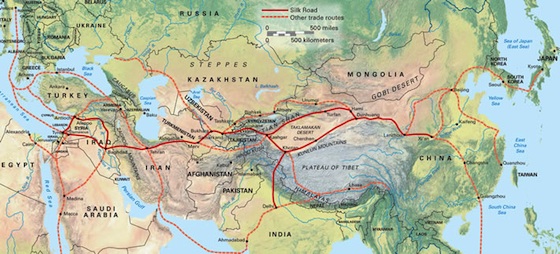How to Use History Games
A MiddleWeb Blog
Games, like movies, are often used as time-wasters. Word searches and simplified crossword puzzles are pacifiers for students who complete a test or assignment before the rest of the class. Such activities have virtually no academic value and are usually enjoyed by students because they require no mental effort.
On the flipside, many games that would have real value as teaching tools are too complicated for middle school students, especially if some are struggling readers or English Language Learners.
Bottom line (for me): Games, like any other classroom activity, should only be used when they are the most effective method of building the knowledge or skills that you want your students to master by the end of the lesson.
Skill Building
Skills like map and graph reading are essential to social studies, but teaching these skills can often result in tedious and confusing lessons. As with anything we teach, the ideal is to let the students explore the use of these tools on their own so that the acquired knowledge is integrated into existing mental schemas. The question is, how do you get the students to willingly struggle with difficult and unfamiliar concepts on their own?
As with most of my game activities, I divide the class into teams of 3-4 students. I provide each team with some kind of game card that has a space for a stamp, sticker or other indicator of completion. Students also have access to folders with graphs or atlases (depending on the skills I am teaching). Each team is tasked with solving a series of puzzles that I provide. One team member – the “runner” – brings me the game card after each solution and receives the appropriate reward.
There are two ways to turn this into a race and thus create the essential sense of urgency that makes students feel like they are playing a game and not doing an assignment.
• One is to have the puzzles written on the game card, and provide larger point rewards to the first students to solve each puzzle (you must allow them to do the puzzles out of order, otherwise the slower teams will feel like it is hopeless).
• Another way to make this into a game is to have different puzzle sets on note cards labeled “easy,” “medium,” and “hard.” Point values should increase with difficulty, and you should set a clear goal (e.g., students need 100 points for an “A,” and anything over is extra credit).
The race is a great way to get students to ask you salient questions (such as how to use the key to a map, or what is represented by a graph) and know you have their undivided attention as you help them learn the new concept. Students will also be eager to demonstrate the knowledge right away, in order to earn more points. A point goal means that all students can feel successful, even if some do better than others.
Reinforcing a Concept
Games can also be a useful way to reinforce something that you have covered in a recent lesson. Such games are best suited to clarifying conceptual frameworks rather than discrete knowledge. When I taught 7th Grade World History, I used a game to help students better understand the relationship between trade, patronage and the flourishing of art and science during the Renaissance. Given the amount of time it can take to set up and explain a game, it is usually best to cover as much ground as possible while playing.
Information about the Silk Road trading game is included at the end of this post, so I will not go into detail here. I do want to make it clear that this was part of a lesson arc that took place over several weeks. The students had read about the Silk Road and 14th and 15th century Italian city-states. I had also engaged the students in lessons on perspective and anatomy, both of which included student-generated art, to help bring the artistic and scientific movements of the time to life.
After the game, we followed up with a discussion and written reflection about the relationship between trade and the societal changes that took place during the Italian Renaissance. Students were expected to connect all they had read and learned about the Renaissance with the game, and were encouraged to think of the game as a reenactment of the competition among the rising merchant class of that time. All of this is to say that the game was merely one component of a larger structure. By itself, it might have been fun but would have had little value as a teaching tool. In context, it deepened the learning.
Discrete Knowledge
While the ideal history classroom engages in a series of debates over Big Ideas, there are times when students must know specific little chunks of information. You cannot meaningfully debate the justice of United States intervention in Latin American national affairs if you do not know what countries comprise Latin America. No matter how you dress it up, memorization is a tedious task. Here, a game can provide a more engaging backdrop to this thankless academic endeavor.

In this case, I have had the best results with a hybrid of digital and analog elements. It is usually easiest to project a board and any vital statistics for the entire class to see. However, students are more engaged if there are dice, cards, fake cash or other game pieces that they can in some way physically manipulate. (Two games I’ve used serve as examples: the analog 10 Days in Africa and digital geography games at Sheppard Software.)
I have also included information (below) about a game I’ve used to teach United States geography and the electoral college as another example of a geography-related game (it’s an adaptation of a game developed by Sebastian Passanisi with some college friends). If you want the game to help students memorize, rather than have them memorize the states beforehand, it is best to play a few rounds with open atlases, and then a final “no atlas” round.
Prepare to have fun!
As with any teaching tool, games are not effective in isolation — set apart from the rest of the learning experience. Most require a lot of preparation and thoughtful follow-up to be more than mere distractions from less overtly fun lessons. However, as with any new element you introduce to the classroom, the best way to integrate games into the classroom is to experiment, discover what works for you, and have fun!
Information about VASSAL games

If you’d like to learn more about using these games, please contact me. ALSO: Visit the Vassal website to explore other free game modules and learn how to create some of your own.







































Aaron, I just wanted to pass along a vocabulary review website that I built for students. Please check out http://www.bubbabrain.com to view the vocabulary games. We have a demo game posted on the homepage. This is a free resource for students and teachers. My students love playing games via the smartboard. It is a fast and effective way to review vocabulary.
@1teacher4edu on twitter
Darren McCarty
I’m glad that you talked about the ability to interpret maps and graphs is critical in social studies, yet teaching these abilities may be tiresome and difficult. My daughter loves history subjects in school. This is a great tip for her in enhancing her knowledge by way of History Simulation Learning. She will love this post.